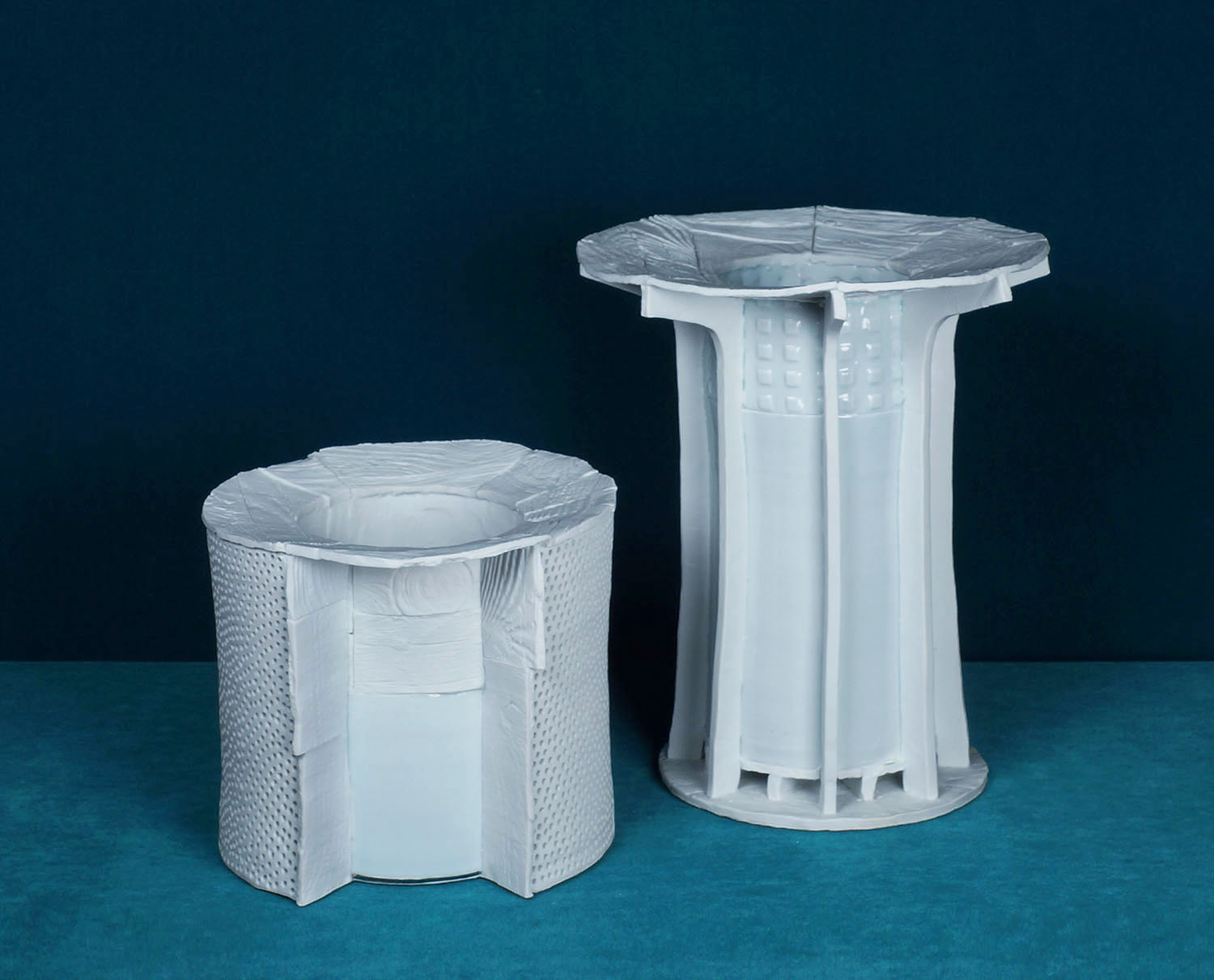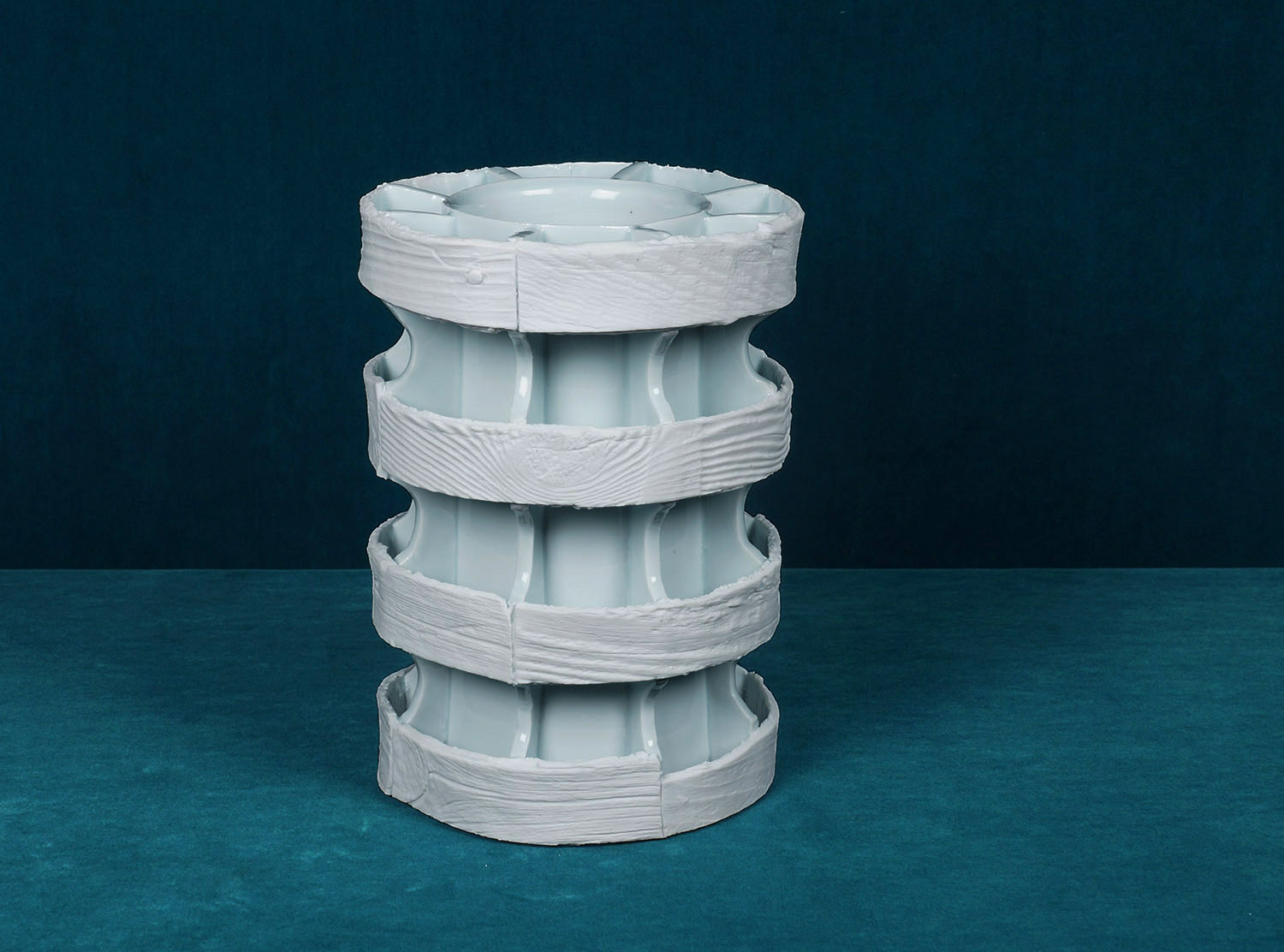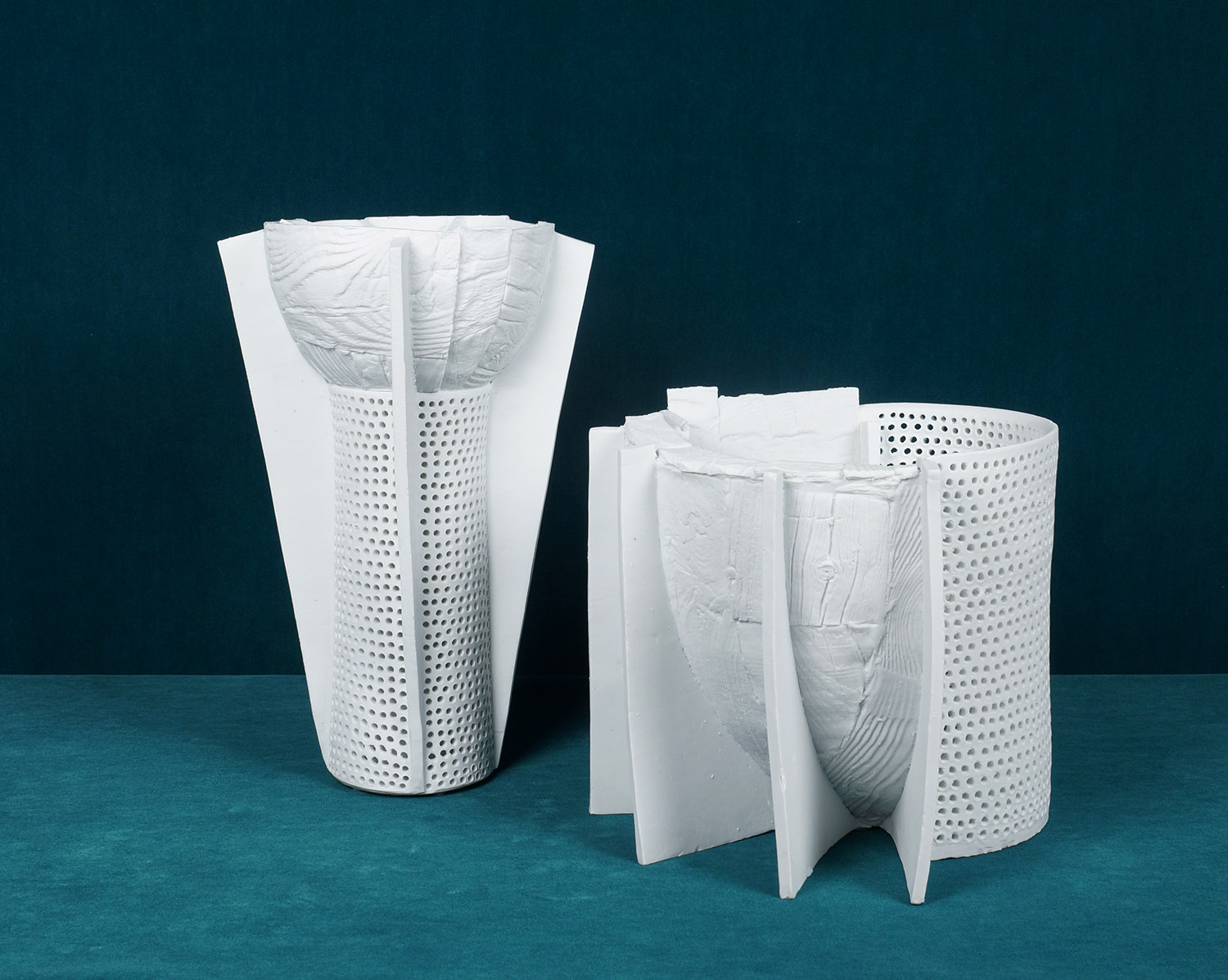Porcelain Slab Construction Vessels
Bryan Hopkins, USA
Complex and fanciful shapes define this recent series in Bryan’s ongoing exploration of dysfunctional and functional vessels in bold architectural forms. With a deft hand, Bryan invites us to contemplate the relationship between surface and structure. Executed in porcelain with celadon glaze with platinum luster, fired in a gas reduction kiln, Bryan selects his materials for their ability to both exaggerate and contrast the process and form. Bryan engages history as an ally in building a case for the appreciation of delicate surface and unconventional construction. With a simple celadon glaze applied only to the smooth wells of the vessel walls, Bryan references a rich history in Asian ceramics. Prized in Imperial courts long before blue and white porcelain, it is associated with subtle and delicate surface textures and patterns. Similarly, by referencing the historical Japanese kintsugi technique of repairing cracks and damage with gold, Bryan invites you to consider the unrefined nature of his slab assemblage construction, drawing attention to the relevance of the vessel’s exposed joint and structure. Bryan is heavily influenced by his intimate interactions with Brutalist architecture; observing evidence of the raw cement pushing against the wooden forms it is poured into, examining these details daily in stairwells between teaching classes. These interactions have inspired deeper reflection on the early work of I. M. Pei and Louis Kahn; architecture enhanced by its reliance on its simple, base materials. This influence is simultaneously balanced by recollections of the childhood pastime of fort-making, cobbling together unstable and impermanent ad-hock, blanket draped structures. Bryan’s work suggests that we take a more nuanced view of the relationship between surface and structure, delicacy and strength. |



